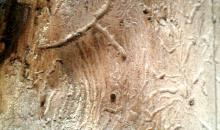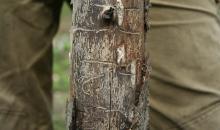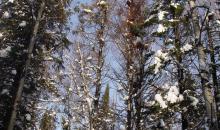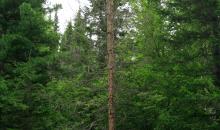Polygraphus proximus(POLGPR)
Photos
For publication in journals, books or magazines, permission should be obtained from the original photographers with a copy to EPPO.
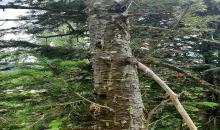
The attacked fir tree (Abies sibirica) with resin flow on the main trunk. Karaguzhikha, northeastern Kazakhstan, July 2023.
Courtesy: Valentin V. Rudoi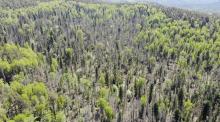
Declining fir forest (predominated by Abies sibirica) in Stolby Nature Reserve, Krasnoyarsk, Russia.
Courtesy: Stolby Nature Reserve, Krasnoyarsk, Russia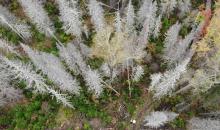
Dried but still standing firs (Abies sibirica) in Stolby Nature Reserve, Krasnoyarsk, Russia.
Courtesy: Stolby Nature Reserve, Krasnoyarsk, Russia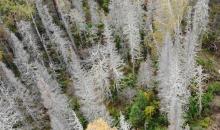
Dried but still standing firs (Abies sibirica) in Stolby Nature Reserve, Krasnoyarsk, Russia.
Courtesy: Stolby Nature Reserve, Krasnoyarsk, Russia
The crowns of died firs (Abies sibirica) in Stolby Nature Reserve, Krasnoyarsk, Russia.
Courtesy: Stolby Nature Reserve, Krasnoyarsk, Russia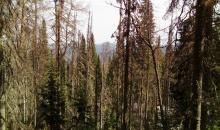
View to the dead stand (Abies sibirica) in late autumn. Stolby Nature Reserve, Krasnoyarsk, Russia.
Courtesy: Stolby Nature Reserve, Krasnoyarsk, Russia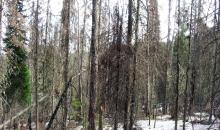
View to the dead stand (Abies sibirica) in early winter. Stolby Nature Reserve, Krasnoyarsk, Russia.
Courtesy: Stolby Nature Reserve, Krasnoyarsk, Russia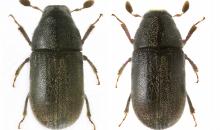
Male (right) and female (left) of Polygraphus proximus, emerged from Abies holophylla, May 2022, nearby Anisimovka village, South of Primorsky Krai, Russia. A.V. Petrov leg.
Courtesy: Alexander V. Petrov
Exit holes on the bark of Abies sibirica. Karaguzhikha, northeastern Kazakhstan, July 2023.
Courtesy: Valentin V. Rudoi
Mother and larval galleries in sapwood of Abies holophylla, May 2022. South of Primorsky Krai, Russia.
Courtesy: Alexander V. Petrov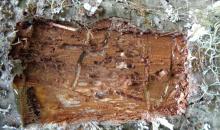
Mother galleries in sapwood of Abies sibirica. Karaguzhikha, northeastern Kazakhstan, July 2023.
Courtesy: Valentin V. Rudoi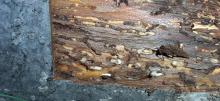
Mother and larvae galleries and pupal chambers in sapwood of Abies sibirica. Karaguzhikha, northeastern Kazakhstan, July 2023.
Courtesy: Valentin V. Rudoi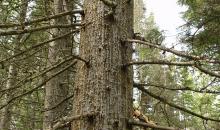
Tree (still alive) heavily infested by Polygraphus proximus in the Krasnoyarsk region (RU).
Courtesy: Evgeni Akulov (RU).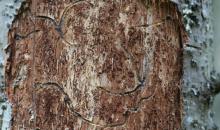
Galleries of Polygraphus proximus under the bark, Krasnoyarsk region (RU).
Courtesy: Evgeni Akulov (RU).

